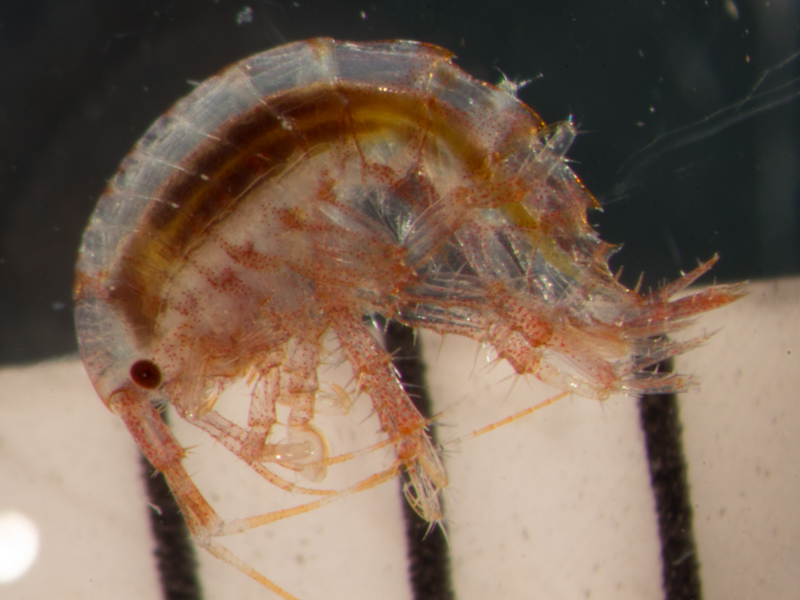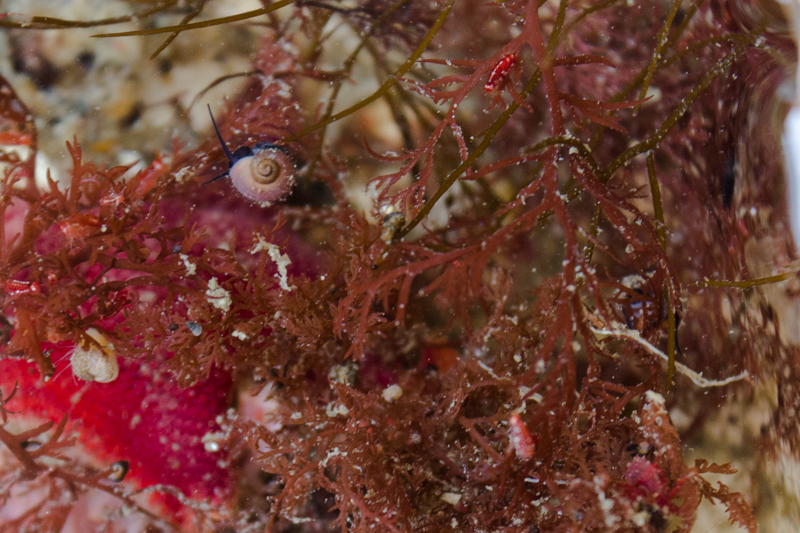
What use do PVC pipe, window screening and cable ties have in Antarctica: We are soon to open our suite of amphipod hotels to their first inhabitants. I am not talking about an adventure for human tourists in Antarctica but rather an experimental set up which includes fun and colorful units which we like to call amphipod hotels.
So why are we building amphipod hotels in the first place?
I have talked a lot about my favorite seaweed, Ploc, before and as you might guess, this is still all about Ploc and a super cool amphipod (which is a shrimp-like invertebrate) called Paradexamine fissicauda. But because this is quite a mouth full, I like to call it Paradex (featured from its best side in the picture below). As I mentioned in my previous post (A Reunion of the Sciency Kind), different Ploc individuals are producing different defensive chemicals. And whilst we are curious to find out why they do so, there are other aspects that are interesting too – for example: how might this affect the rest of the ecosystem?

Amphipods and snails are probably the most abundant inhabitants on seaweeds in Antarctica (just like insects on the bushes and trees in your front yard). From previous studies conducted by the Amsler-Baker-McClintock trio, we know that nearly nothing will feed on Ploc because it is so high in chemical defenses. It is like brussels sprouts of the ocean – some people hate eating them because they can actually taste the defensive chemicals produced by the sprouts resulting in a bitter taste.

So, most of Ploc’s inhabitants are our equivalent of brussels sprout haters. The only exception is Paradex which happily munches away on Ploc. However, their metabolism still has to deal with the chemicals produced by Ploc – somehow, they have to detoxify it. However, we are not trying to find out how exactly they are doing that. What we are trying to find out, though, is whether the different chemical defenses produced by Ploc have different effects on Paradex. If one chemical defense is more toxic, Paradex will have to invest more energy to detoxify it. This means that there is less energy available for growth and/or reproduction.
Now, we are finally getting back to our amphipod hotels: In order to measure whether there is a cost to Paradex, we need to feed it Ploc individuals with different chemical defenses. For that we collect lots of Ploc. Andrew Shilling, from the University of South Florida (another PhD student on this project), makes a lot of magic (i.e. chemistry) happen and then tells me which chemical defense is produced by which Ploc individual. We than take Ploc individuals with different chemical defenses and place them in different amphipod hotels. The type of chemical defense produced by Ploc is what the colorful cable tie signifies (there is a system to the madness!). We will than place Paradex into the amphipod hotels with Ploc and measure their growth rates by weighing them regularly and taking their pictures. At the end of the experiment we will also check whether any of them produced offspring and if so, whether the number of offspring differ. If one chemical defense is more toxic than the other we expect a slower growth rate and/or less offspring.
So, stay tuned: Move-in day for the Paradex will be soon – we hope they will enjoy their all-inclusive service!